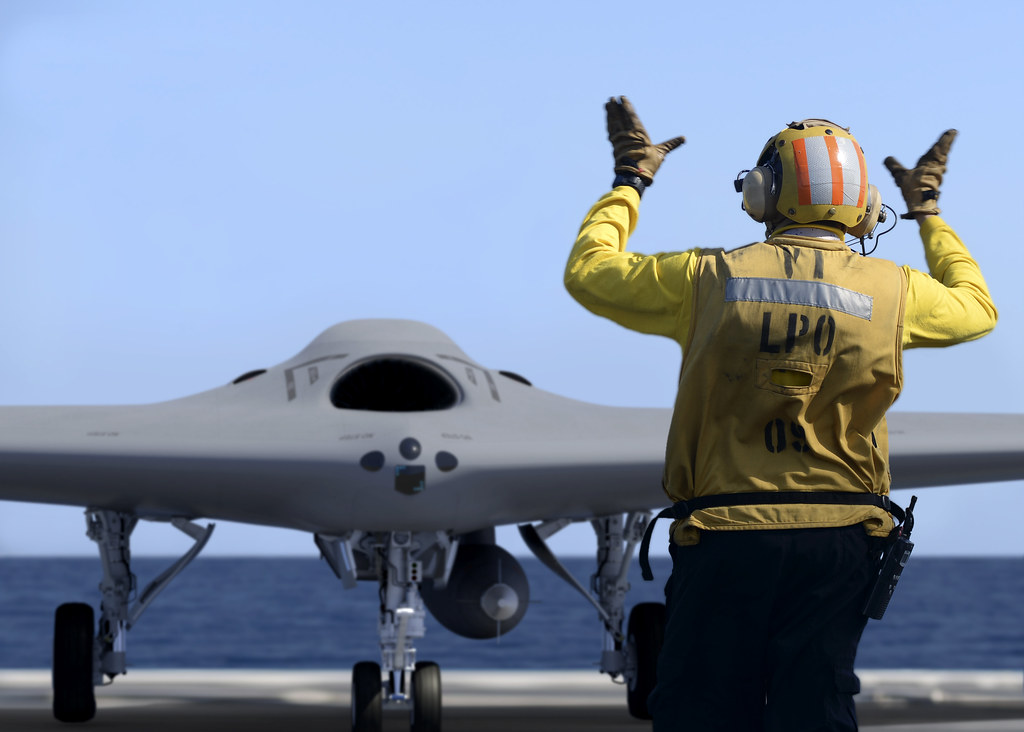
In a significant advancement for U.S. naval aviation, Boeing has successfully tested new software that enables F/A-18 Super Hornet pilots to directly command the unmanned MQ-25 Stingray, initiating the aerial refueling process from the cockpit.

This development is poised to enhance operational flexibility and represents a substantial leap forward in manned-unmanned teaming (MUM-T) technology.

The groundbreaking simulation occurred in St. Louis on May 1, 2024, where Boeing’s new software was put through its paces, demonstrating the refined communication between the MQ-25 and the F/A-18 using existing communications systems.

The test validated that fighter pilots can now command the MQ-25 to deploy its refueling drogue and transfer fuel effectively, without the need for a separate carrier-based air vehicle operator.

Boeing’s lead for F/A-18 New Product development, Alex Ewing, highlighted the significance of this update, stating, “MQ-25 is designed to typically receive commands from air vehicle pilots on an aircraft carrier.

This software will add a second option.” The flexibility afforded by this software could be critical in combat scenarios where electronic emissions from the carrier need to be minimized.

The MQ-25 Stingray, built by Boeing, is designed to fulfill the primary role of an aerial refueler, thereby alleviating the F/A-18 Super Hornets from their current “buddy tanker” duties.

By doing so, this conserves Super Hornets for their intended combat roles. The MQ-25 is equipped with an electro-optic/infrared sensor, allowing it to function in a secondary capacity as an airborne sensor platform.

Juan Cajigas, director of the Advanced MQ-25 program, likened aerial refueling to a ballet, and hailed the software as a major step forward: “To be able to direct the activities via a single pilot, safely and efficiently, is a major step forward in aerial refueling technology.”

The U.S. Navy’s fleet of MQ-25s, currently in development, promises a significant enhancement in its at-sea refueling capabilities. The Navy plans to acquire 76 of these drones, with at least 67 operational models supporting carrier air wings.

The MQ-25 does not require remote piloting, relying instead on sophisticated flight control algorithms to execute missions autonomously.

This technology advances the MQ-25 beyond its prior capabilities, which had included successful refueling tests of carrier-based aircraft like the F/A-18, F-35C, and E-2D Hawkeye.

The first MQ-25 example was delivered to the Navy for testing in February, with operational implementation expected in the second half of 2026, when an initial 13 aircraft will have been delivered.

Boeing’s efforts underscore the importance of aerial refueling in power projection, particularly for the U.S. Navy, which traditionally cannot operate large tanker aircraft from its carriers.

The development of the MQ-25 Stingray stems from the Carrier-Based Aerial-Refueling System (CBARS) program and is a testament to Boeing’s commitment to innovation and the future of combat readiness and sustainability in military operations.

